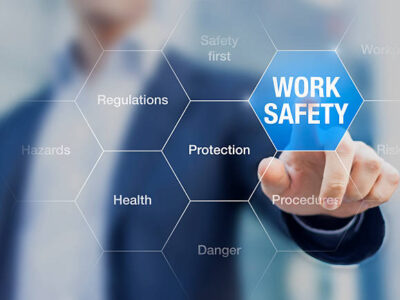As you do your job in California, you may sometimes be exposed to mercury. If you are regularly around this toxic substance, you may develop mercury poisoning.
Mercury exposure can occur in several ways. Workers may encounter it through older thermometers, broken fluorescent lights, industrial machinery, old paints, certain dental fillings, or chemical processing. While consumer products now contain less mercury, employees in specific industries remain at higher risk.
What Is Mercury and Why Is It Dangerous?
Mercury is a toxic heavy metal that exists in several forms:
- Elemental mercury – a liquid metal often found in older thermometers and medical devices.
- Inorganic mercury compounds – salts or powders used in certain industrial processes and paints.
- Methylmercury – an organic compound that builds up in fish and shellfish, but may also be present in industrial waste.
All forms of mercury can damage human health. Agencies such as the Centers for Disease Control and Prevention (CDC), the Environmental Protection Agency (EPA), and the World Health Organization (WHO) warn that even low-level exposure may cause harm over time. For workers in California, Cal/OSHA enforces protective standards, while NIOSH sets recommended exposure limits.
Symptoms and Health Risks of Mercury Poisoning
Mercury poisoning can affect multiple bodily systems. Early signs may include metallic taste, nausea, and tingling in the hands or feet. As exposure continues, symptoms may progress to:
- Tremors or muscle weakness
- Numbness in arms or legs
- Vision or speech difficulties
- Slowed reflexes and concentration problems
- Memory loss or confusion
Severe exposure may cause kidney damage, respiratory issues, or permanent neurological impairment. Pregnant women and children face additional risks: prenatal exposure can interfere with brain development, while children may experience developmental delays or learning problems.
Doctors typically diagnose mercury poisoning through blood or urine tests, and treatment may involve chelation therapy, a procedure that helps the body eliminate mercury more effectively. Long-term monitoring is often required if exposure was significant.
Industries and Workers at Risk
Certain jobs put employees at greater risk of mercury exposure:
- Dentists and dental staff handling amalgam fillings.
- Miners and metal processors work with mercury ore.
- Industrial workers in chemical production or processing plants.
- Healthcare professionals are exposed to older medical equipment.
- Construction workers are dealing with old paint or contaminated building materials.
The Occupational Safety and Health Administration (OSHA) sets a permissible exposure limit of 0.1 milligrams per cubic meter of air for mercury vapor during an eight-hour work shift. California’s Cal/OSHA enforces these standards and requires employers to provide protective equipment, ventilation, and workplace testing.
Legal Rights for California Workers
If you develop mercury poisoning from your job, you may qualify for workers’ compensation benefits, including medical care, wage replacement, and disability payments. In severe cases, permanent disability or death benefits may be available.
When employers fail to follow safety regulations or knowingly expose workers to hazardous conditions, employees may also pursue personal injury or toxic exposure lawsuits against them. These claims can provide additional compensation beyond workers’ comp, such as pain and suffering or loss of future earnings.
Navigating toxic exposure cases is complex. The California Division of Workers’ Compensation and the Occupational Safety and Health Appeals Board handle numerous disputes; however, success often depends on presenting detailed medical evidence and securing expert legal representation. The attorneys at Hussain & Gutierrez have years of experience representing injured workers across Los Angeles and the San Fernando Valley, and we understand how to connect medical proof with workplace conditions to secure results.
Steps To Take If You Suspect Mercury Poisoning
If you believe workplace exposure is affecting your health, take these steps quickly:
- Seek medical attention immediately and request testing for mercury.
- Document your symptoms and workplace conditions, including unsafe practices or lack of protective gear.
- Report exposure to your employer to establish a record.
- Consult with an experienced workers’ compensation attorney to protect your rights.
Acting early ensures you receive both proper medical treatment and the compensation you may be entitled to.
FAQs
What are the early signs of mercury poisoning?
Metallic taste, nausea, tingling, and concentration issues.
How is mercury poisoning diagnosed?
Through blood or urine tests. Severe cases may also involve neurological exams.
Which jobs are at the highest risk?
Dentistry, mining, chemical processing, healthcare, and construction.
What compensation is available?
Medical treatment, lost wages, disability benefits, and, in some cases, death benefits.
Do I need a lawyer for a mercury poisoning claim?
Yes. Toxic exposure claims are often denied without proper medical and legal evidence.
Mercury exposure can have a permanent impact on your life. If you believe workplace conditions in California led to mercury poisoning, don’t wait to seek help. The attorneys at Hussain & Gutierrez are prepared to advocate for your rights and ensure that you receive the care and compensation you deserve.
Contact Hussain & Gutierrez today for a consultation and take the first step toward protecting your future.



